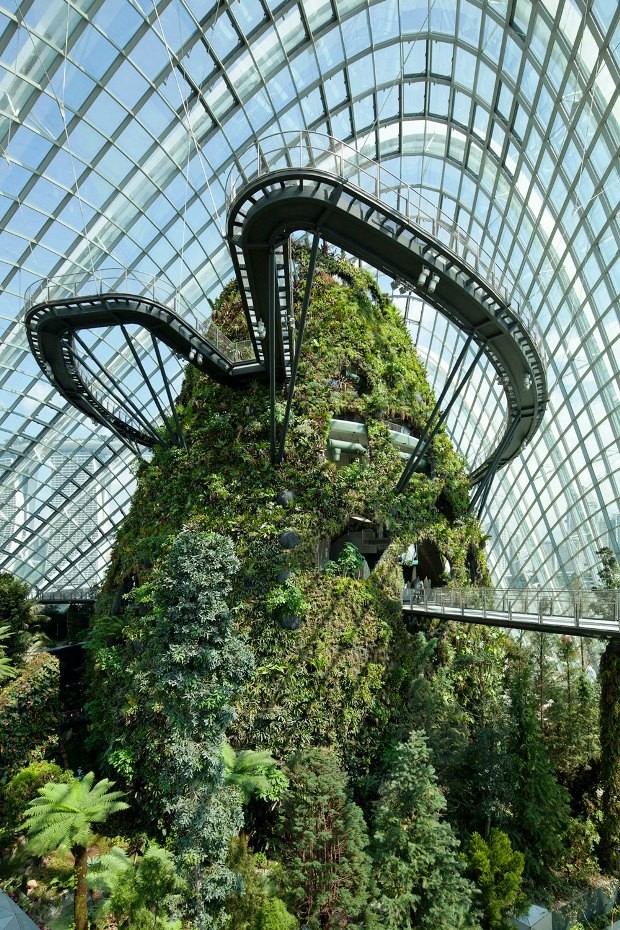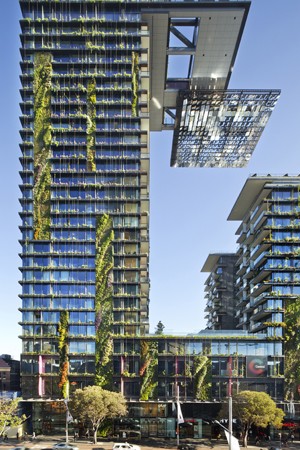The Sydney Morning Herald’s Lance Richardson reports on six rundown city block properties in Miami Beach that an Argentine entrepreneur is set to transform into a neighbourhood of fountains and palm trees.
Melbourne’s Alto on Bourke (pictured right), the city’s only carbon-neutral hotel, supplies honey at breakfast from its rooftop hives.
And gardening writer Robin Powell, like many others, is enamoured of the 25-storey high supertrees at Singapore’s Gardens by the Bay which are “partly covered with a façade of green wall plantings of incredible diversity”.
There are plans for Sydney’s Double Bay to have a rooftop cinema at the council car park and, of course, the city’s highest vertical green wall is maturing at Sydney’s Central Park (Architecture & Design wrote about it recently in an article on five vertical gardens here).
Gardens by the Bay, designed by Wilkinson Eyre, Grant Associates, Atelier One and Atelier Ten (pictured below).

There is a fascination with vertical greenery and rooftop activity for all, especially with benefits such as improved air quality, biodiversity, beauty, insulation, water and reduced urban heat island effects.
City of Sydney has adopted the first ever green roofs and walls policy for Australia, which sets out its commitment to increase the number of high quality green roofs and walls in the City.
As well as saying there are benefits to individuals, communities and the environment to having green walls and roofs, its Green Roofs & Walls, Your inspirational guide, has chapters on why to build green and the different types of walls and roofs, curated examples of residential greenery in inner Sydney, hints at what to ask an architect, and a plant picker with the plants that will work best in your home.
 Pictured: Central Park, Sydney
Pictured: Central Park, Sydney
Elsewhere there is another list of almost 100 green roofs and walls showing which ones have public access, mostly in parks and hotels, and which do not, mostly with private commercial firms and residential blocks.
The guide’s selector advises on how best to choose a green wall, Basic, Semi-Intensive and Intensive, and where you require little gardening knowledge and ones for more experienced gardeners and where good handy-person skills are required.
It is accompanied by a three -year implementation plan, a resource manual and perception study. There are also downloadable resources with more technical installation information, water and energy technologies and maintenance issues.
The guide is available at selected cafes in inner Sydney, and at Green villages workshops and online.
Melbourne’s Growing Green Guide: A guide to green roofs, walls and facades in Melbourne and Victoria was released in February.
Deborah Singerman is a Sydney-based journalist and editor, specialising in architecture and design, including city, community, society, economy, sustainability and culture.

